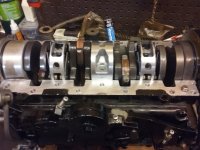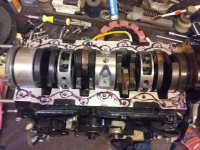Thank you guys for your all inputs. I just wish I knew someone who either has my same motor or has actually had it in their hands and could definitively say yes, you have a thermostat, yes you have a thermal sensor, and yes there is or is not a “limp mode” on this model. I can’t physically see it and don’t have the experience to rely on. Thanks again…even
I appreciate that, and as much as I should have a warning horn if available…I’m still trying to track down possible reasons why my motor is bogging down after running great for 20 minutes. If there actually is a Limp Mode and associated parts it would be very helpful.If post #46 shows your motor there is no thermostat shown !!----It does have a temperature switch and a wise owner would test and see if there is a warning horn.-----If none is found install one !






















